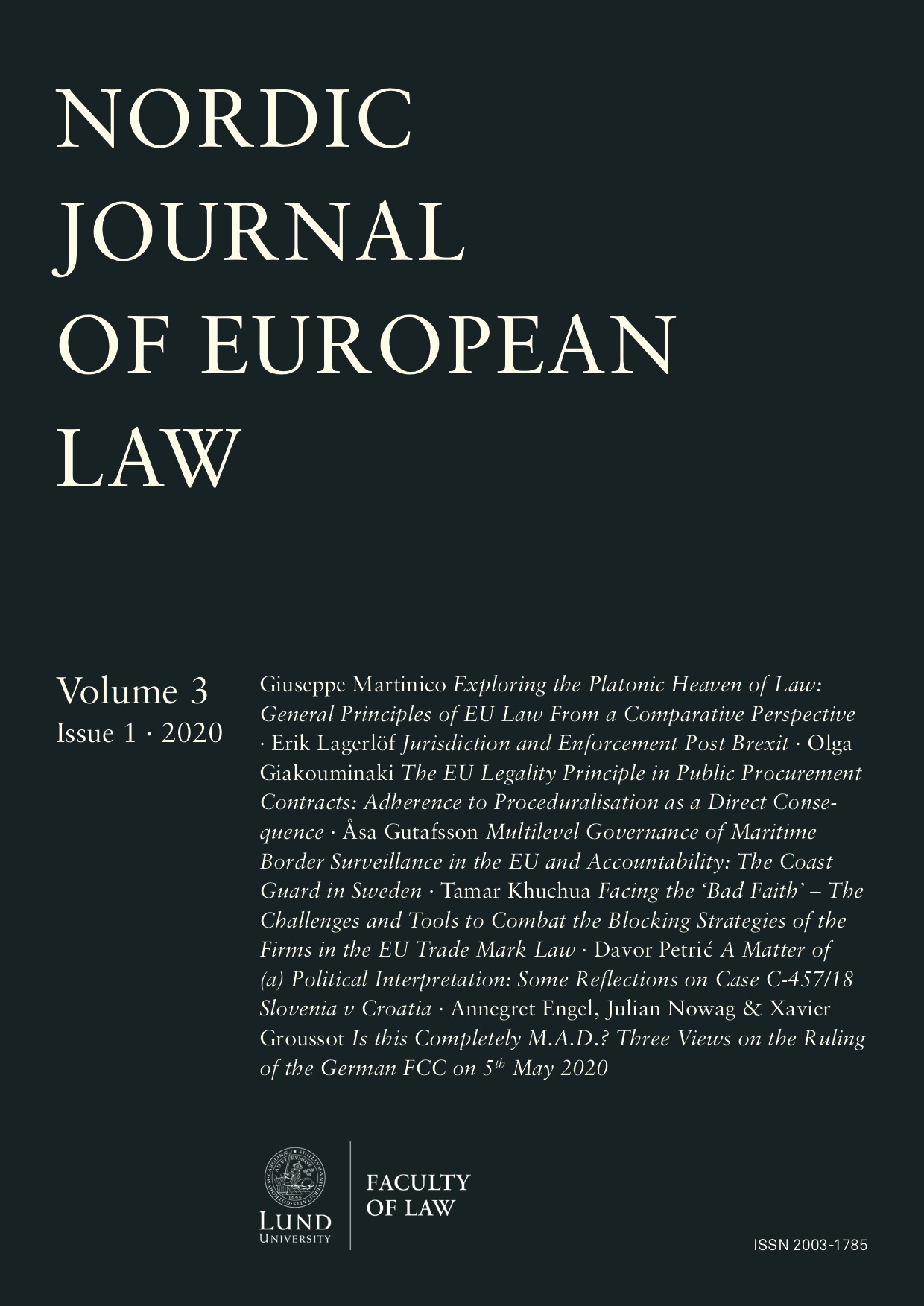Facing the 'Bad Faith' The Challenges and Tools to Combat the Blocking Strategies of the Firms in the EU Trade Mark Law
Main Article Content
Abstract
The Court of Justice of the European Union has suggested that when the concept set out in the EU regulation is not defined by that regulation, it should be understood according to its usual, everyday meaning. There is no doubt that the understanding of ‘bad faith’ might differ from one person to another and especially from one firm to another. Indeed, ‘bad faith’ in trade mark law might take many different forms which are not easy to detect as the large number of cases concerning the issue of ‘bad faith’ in relation to national and EU trade marks illustrate. By analysing the current legislative framework as well as the case law of the Court of Justice of the European Union, the paper suggests that in order to maintain and even extend the smooth functioning of the EU trade mark system, legislative changes should be introduced. In particular, it is argued that it is reasonable to examine the intention of trade mark applicants already at the application stage in order to avoid the waste of resources and the burden of dealing with the trade marks registered in ‘bad faith’ in the invalidity proceedings post factum and to provide a non-exhaustive list of what elements the ‘bad faith’ can consist of. These amendments should also do good in terms of serving the broader goals of the EU law, which amongst others include, undistorted competition, legal certainty and sound administration.
Article Details

This work is licensed under a Creative Commons Attribution-NonCommercial-NoDerivatives 4.0 International License.

